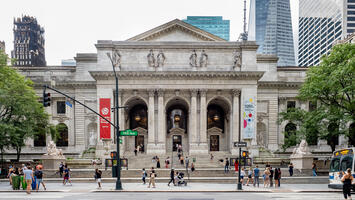
Due to budget concerns, New York City Mayor Eric Adams proposed cuts to the New York City public library budgets, forcing the majority of public libraries to cut their hours and open only five days a week. Public libraries in the city, since November, have already been closed on Sundays to offset the surging cost of the local migrant crisis. These moves show how intent the mayor is on driving people away from important third spaces—and even away from the city itself.
I recently had the chance to chat with a handful of families who left New York and settled in the Yardley, Pennsylvania area over the past 18 months or so. Some still worked in New York and commuted occasionally, while others were remote or found jobs elsewhere. Although their professional tracks and life stages were all a bit different—some had young children, others had adult children, and some had no children—each family appeared extremely relieved to have left New York.
The former New Yorkers loved the city and never thought they would leave. Yet, life had become untenable since the pandemic. They cited their concerns about corruption and partisanship, as well as concerns with public safety, policing, and unending taxation and climbing charges. It was hard for me to argue with them; the city’s streets are dirty and in disrepair, the city feels unsafe and chaotic, violence and disruption have become commonplace, all the while, costs are skyrocketing, and congestion zones and failing public transit have made moving around the city even harder. The public school system is seeing a shortage in space, the city is not protecting property and ownership rights, and businesses are struggling because they cannot protect their goods from unending crime.
These new Pennsylvanians are not exceptions. Census data shows that in 2023, New York City lost almost 78,000 residents, shrinking its population to 8.26 million people. This is on top of the city losing more than 126,000 residents in 2022 after the pandemic ended. New survey data from the Citizen Budget Commission of 6,600 New Yorkers reveals that just 30 percent of New Yorkers think the quality of life in the city is good and only 50 percent plan on staying in the city in the next four years. Over the past six years, the Commission found that only 30 percent of New Yorkers rated the quality of life in the city as “excellent” or “good,” down from 50 percent in 2017. Just 49 percent of New Yorkers said that they felt safe riding the subway during the day, a stark drop from the 82 percent who reported feeling safe in 2017.
The reasons for leaving offered in the survey match my informal sample—New Yorkers feel notably more unsafe in the city in today than they did six years earlier. Residents are unsatisfied with many public services, public education, the cleanliness of their neighborhoods, and the traffic. Sadly, I have seen random assaults on the streets, know families who have had their homes invaded, and a teacher in my children’s school was randomly pushed onto the subway tracks resulting in multiple surgeries and missing half a year of work.
New York is letting its institutions—which not only promote law and order, but stability and investment—disintegrate, and we are seeing the consequences. What must be understood here is that this decline is a matter of bad public policies, poor governance, and incorrect choices, not a pandemic. The city must pause and strategically think about how to shore up its institutions and stop destroying them or its numbers will continue to drop.
Read the rest of this piece at AEI.
Samuel J. Abrams is a profesor of politics at Sarah Lawrence College and a nonresident senior fellow at the American Enterprise Institute.
Photo: Ajay Suresh, via Flickr under CC 2.0 License.












